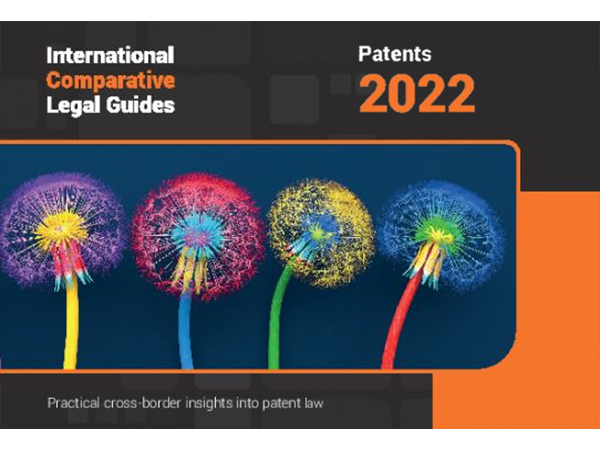
Intellectual Property
Viewpoints
Filter by:
Markman at the ITC and Its Effect on an Investigation
September 20, 2016 | Blog | By Michael Renaud, Michael Newman
Several months ago, we were struck with the question of whether, as counsel for a patent owner at the ITC, our clients’ case would benefit from a Markman hearing. Claim construction during an ITC investigation was routinely performed as part of the evidentiary hearing in an investigation, rather than as part of earlier Markman proceedings.
Read more
Federal Circuit: Go whole-hog on validity below if you want to contest an independent determination of invalidity on appeal
September 15, 2016 | Blog | By Michael Newman
Think you’ve won on validity at the U.S. Patent and Trademark Office’s Patent Trial and Appeal Board (PTAB) and your claims are safe on appeal? “Not so fast,” says the Federal Circuit in Software Rights Archive, LLC v. Facebook Inc., Nos. 2015-1649 through 2015-1563 (Fed. Cir., Sep. 9, 2016) (nonprecedential) (per curiam).
Read more
ITC Declines to File Petition for Certiorari – CAFC Holding that ITC Does Not Have Jurisdiction over Digital Imports Stands
September 1, 2016 | Blog | By Daniel Weinger, Nick Armington
The deadline has come and gone for the ITC and patentee Align to file petitions for certiorari seeking review by the Supreme Court of the Federal Circuit’s decision in ClearCorrect. On November 10, 2015, a panel of the Federal Circuit found that the ITC does not have jurisdiction to bar digital downloads or imports where there was no physical article to bar from importation.
Read more
A Novel Outcome at the International Trade Commission: Patent Claims Invalidated Under Alice in the 100-Day Pilot Program
August 26, 2016 | Advisory | By James Wodarski, Andrew DeVoogd, Daniel Weinger, Matthew Karambelas
On August 22, 2016, Administrative Law Judge David Shaw of the International Trade Commission (“ITC” or “Commission”) issued his final initial determination (“the ID”) in Certain Portable Electronic Devices and Components Thereof, Inv. No. 337-TA-994.
Read more
Industrial Espionage and the Defend Trade Secrets Act
August 24, 2016 | Blog | By Michael Renaud, Nick Armington
American corporations are facing an ever increasing threat of misappropriation of their valuable trade secrets through industrial espionage, defined as the theft of a company’s trade secrets by an actor intending to convert the trade secret to the economic benefit of a competitor.
Read more
Federal Circuit Emphasizes that an Obviousness Analysis Based on Common Sense Must be Supported by Substantial Evidence and Explained with Sufficient Reasoning
August 23, 2016 | Blog | By Andrew DeVoogd
A recent decision by the Federal Circuit suggests that relying on “common sense” in analyzing whether a patent is obvious in view of prior art cannot always be based on common sense alone.
Read more
The Specter of Alice Looms Large Even in PGRs
August 15, 2016 | Blog | By Brad M Scheller
On August 3, 2016, the Patent Trial and Appeal Board issued a post-grant review decision that bears one striking similarity to its previous post-grant review decisions, namely invalidation of claims under Alice Corp. Pty. v. CLS Bank Int’l, further bolstering the salience of patent ineligibility challenges in post-grant proceedings.
Read more
Ninth Circuit Provides Clarification Concerning the Definition of Trade Secret
August 1, 2016 | Blog | By Michael Renaud, Nick Armington
On July 5, 2016, in United States v. Nosal, the Ninth Circuit Court of Appeals clarified the definition of “trade secret,” finding that data derived from a compilation of publicly available information can constitute a protectable trade secret in a case involving allegations under the Economic Espionage Act (EEA).
Read more
IP for Start-ups: Part VI
July 19, 2016 | Blog | By Michael Van Loy
In our sixth "IP for Start-Ups” video, “Getting the Correct Named Inventors on a Patent”, Mike discusses the importance of including all of the inventors on a patent and why it's important to name anyone who has a reasonable proximity to the invention.
Read more
What Type of Sale Constitutes an On-Sale Bar?
July 13, 2016 | Blog | By Brad M Scheller, Monique Winters Macek
An invention cannot be patented if it was ready for patenting and was subject to a commercial offer for sale more than one year before the application was filed.
Read more
USPTO Fast-Tracks Cancer Immunotherapy Patent Applications
July 8, 2016 | Blog | By Terri Shieh-Newton
Effective June 29, 2016, the United States Patent and Trademark Office (USPTO) implemented a pilot program to provide for earlier review of patent applications pertaining to cancer immunotherapy.
Read more
Focusing on the Second Step of Alice, Federal Circuit Finds Inventive Concept in Software Patent in BASCOM
July 6, 2016 | Blog | By Andrew DeVoogd, Matthew Karambelas
Arming software-patentees with additional precedent in favor of eligibility for software patents post-Alice, the Federal Circuit on June 27, 2016 handed down its decision in BASCOM Global Internet Servs., Inc. v. AT&T Mobility LLC, et al., No. 2015-1763, 2016 U.S. App. LEXIS 11687 (Fed. Cir. June 27, 2016), vacating the lower court’s decision.
Read more
IP For Start-Ups: Part V
July 5, 2016 | Blog | By Michael Van Loy
In our fifth "IP for Start-Ups” video, “Copyrights versus Patents to Protect Software Innovations”, Mike discusses the pros and cons of using copyrights or patents to protect your software.
Read more
Fed Circuit's "Amgen v. Apotex" Decision: Clarification of a BPCIA Riddle (Unless, of course, the Supreme Court Steps In)
July 5, 2016 | Blog | By Thomas Wintner
On July 5, the Federal Circuit issued another important decision regarding the meaning of certain provisions of the Biologics Price Competition and Innovation Act (BPCIA).
Read more
Pitfalls When Refiling a Priority Application under Article 4 of the Paris Convention
June 30, 2016 | Blog | By Terri Shieh-Newton
Patent applicants who have filed a priority application (such as a U.S. Provisional application) may wish to abandon and then refile that priority application to extend the time available for filing a utility application.
Read more
Supreme Court Decides Two Key Aspects of IPR in Cuozzo Speed Techs., LLC v. Lee
June 30, 2016 | Blog | By Brad M Scheller, Gurneet Singh, Catherine Xu
The U.S. Supreme Court ruled on June 20, 2016 in Cuozzo Speed Techs., LLC v. Lee that: (1) the statutory authority of the Patent Trial and Appeal Board (“Board”) in instituting an inter partes review (“IPR”) proceeding is final and non-appealable, thereby not being subject to judicial review, and (2) it is appropriate for the Board to construe claims in an issued patent according to their broadest reasonable interpretation, rather than their plain and ordinary meaning as in district court litigation.
Read more
IP for Start-Ups: Part IV
June 28, 2016 | Blog | By Michael Van Loy
In our fourth "IP for Start-Ups" video, "Are U.S. Patents Good Outside of the USA?", Mike discusses how geography plays into patent protection, both inside the U.S. and internationally.
Read more
District Court Judge Issues TRO and Preliminary Injunction Under the Defend Trade Secrets Act
June 28, 2016 | Blog | By Michael Renaud, Nick Armington
In some of the first decisions under the newly enacted Defend Trade Secrets Act, on June 10 and 22, 2016, United States District Judge Jon S. Tigar granted a temporary restraining order and preliminary injunction in Henry Schein, Inc. v. Cook, No. 16-cv-03166-JST (N.D. Cal. June 10, 2016) that prevents a sales consultant from accessing, using or sharing confidential data that she allegedly stole from her former employer before leaving the company in violation of trade secret laws and employment agreements.
Read more
Keep Calm and IP On: Planning for UK IP Post-Brexit
June 27, 2016 | Blog | By Michael Renaud, Brad M Scheller
This past Thursday the Brexit vote sent shockwaves around world, including the IP community and in particular with respect to IP rights in the UK and Europe. But concerns at the moment are speculative as nothing yet has changed.
Read more
Federal Circuit Rules That “Same-Day Continuations” Are Proper
June 22, 2016 | Blog | By Brad M Scheller
The Federal Circuit yesterday issued a decision that will make many patent owners and IP practitioners breathe easier. In Immersion Corp. v. HTC Corp. the Court reversed a district court holding that a continuation application filed on the same day that its parent application issued is not entitled to the parent priority date.
Read more
Explore Other Viewpoints:
- Data Centers & Digital Infrastructure
- AI: The Washington Report
- Antitrust and Federal Regulation
- Appellate
- Arbitration, Mediation & Alternate Dispute Resolution
- Artificial Intelligence
- Awards
- Bankruptcy & Restructuring
- California Land Use
- Cannabis
- Class Action
- Complex Commercial Litigation
- Construction
- Consumer Product Safety
- Corporate Governance (ESG)
- Cross-Border Asset Recovery
- DEI Legal Developments
- Debt Financing
- Direct Investing (M&A)
- Diversity
- EB-5 Financing
- Education & Nonprofits
- Employment
- EnforceMintz
- Environmental (ESG)
- Environmental Enforcement Defense
- Environmental Law
- Environmental, Social, and Corporate Governance (ESG)
- FDA Regulatory
- False Claims Act
- Federal Circuit Appeals
- Financial Institution Litigation
- Government Law
- Growth Equity
- Health Care
- Health Care Compliance, Fraud and Abuse, & Regulatory Counseling
- Health Care Enforcement & Investigations
- Health Care Transactions
- Health Information Privacy & Security
- IP Due Diligence
- IPRs & Other Post Grant Proceedings
- Immigration
- Impacts of a New US Administration
- Insolvency & Creditor Rights Litigation
- Institutional Investor Class Action Recovery
- Insurance & Financial Services
- Insurance Consulting & Risk Management
- Insurance and Reinsurance Problem-Solving & Dispute Resolution
- Intellectual Property
- Investment Funds
- Israel
- Licensing & Technology Transactions
- Life Sciences
- Litigation & Investigations
- M&A Litigation
- ML Strategies
- Managed Care
- Medicare, Medicaid and Commercial Coverage & Reimbursement
- Mergers & Acquisitions
- Patent Litigation
- Patent Prosecution & Strategic Counseling
- Pharmacy Benefits and PBM Contracting
- Portfolio Companies
- Privacy & Cybersecurity
- Private Client
- Private Equity
- Pro Bono
- Probate & Fiduciary Litigation
- Products Liability & Complex Tort
- Projects & Infrastructure
- Public Finance
- Real Estate Litigation
- Real Estate Transactions
- Real Estate, Construction & Infrastructure
- Retail & Consumer Products
- Securities & Capital Markets
- Securities Litigation
- Social (ESG)
- Special Purpose Acquisition Company (SPACs)
- Sports & Entertainment
- State Attorneys General
- Strategic IP Monetization & Licensing
- Sustainable Energy & Infrastructure
- Tax
- Technology
- Technology, Communications & Media
- Technology, Communications & Media Litigation
- Trade Secrets
- Trademark & Copyright
- Trademark Litigation
- Unified Patent Court (UPC)
- Value-Based Care
- Venture Capital & Emerging Companies
- White Collar Defense & Government Investigations
- Women's Health and Technology



